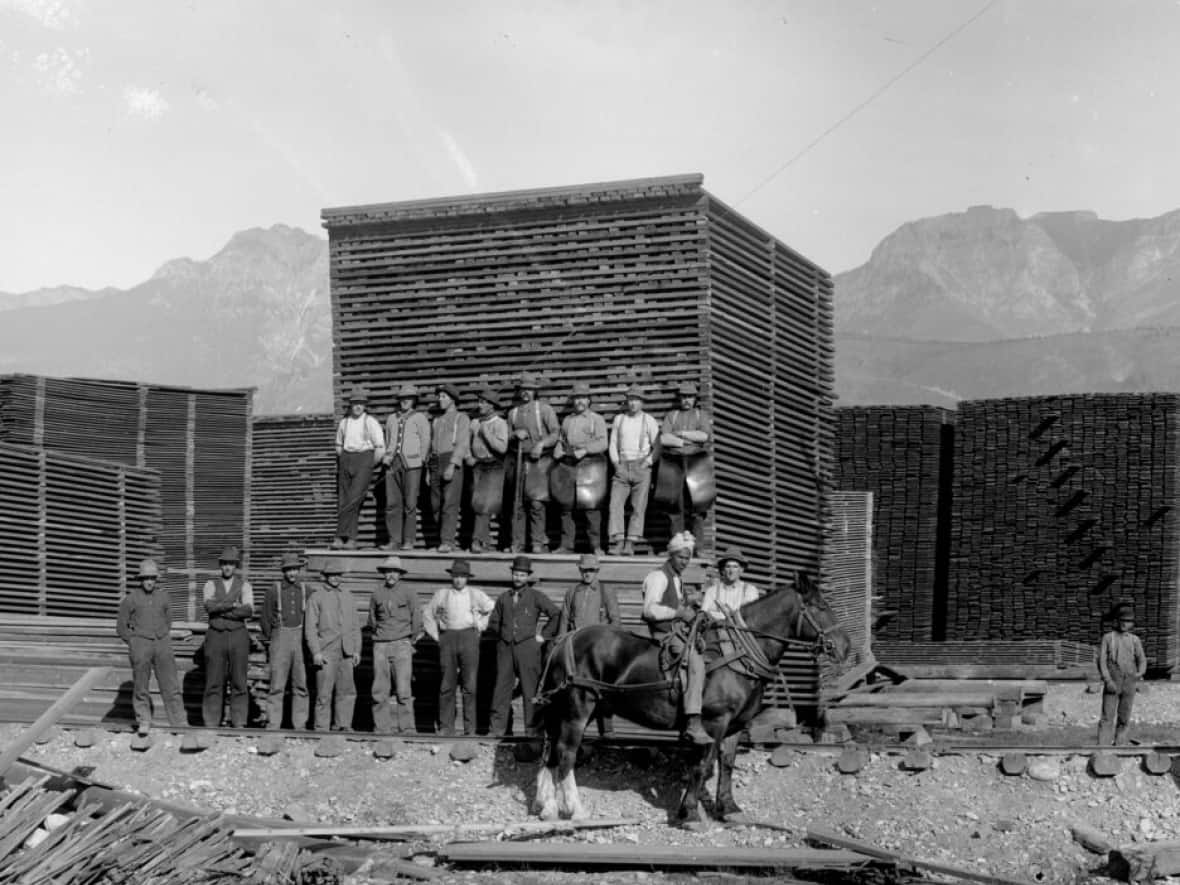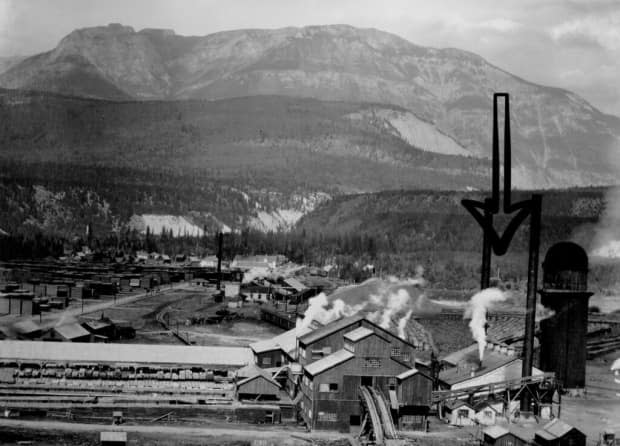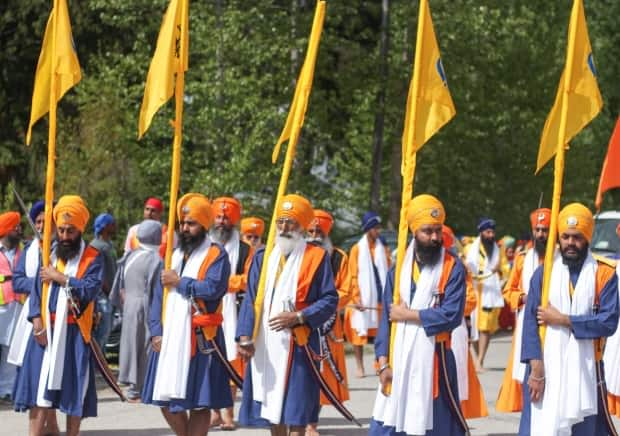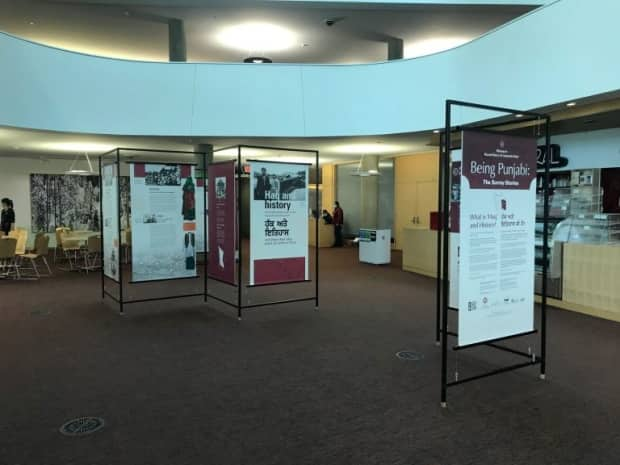A sawmill storage house in southeast B.C. was home to North America's first gurdwara, researcher says

A researcher in B.C. says the first Sikh temple in North America was likely built in the province's East Kootenay region.
Colleen Palumbo, who studied old census records as part of her research, says the gurdwara was established in a repurposed storage house at a sawmill in Golden, B.C., around 1905.
Palumbo has researched the gurdwara's history since retiring as executive director of the Golden Museum and Archives two years ago. Her research is part of a Punjabi Canadian Legacy Project (PCLP) program to support local museums' research on Sikh Canadian history, and her findings were published on the Golden Museum website in February.
They're also featured in the Haq and History travelling exhibition set up by the PCLP, a program co-organized by the University of the Fraser Valley and Royal B.C. Museum.
Palumbo estimates about a dozen Sikh men in Punjab's forestry industry came to Golden — a community in the Rockies around 200 kilometres west of Calgary — around 1902 to work at the Columbia River Lumber Company sawmill.
To encourage them to stay, Palumbo said, the company allowed the men to turn a storage building near their bunkhouse into a temple.
By the 1920s, she said, census records suggest there were more than 60 Sikh workers in the community.
The gurdwara was torn down in 1927 after the sawmill closed, Palumbo said, and it would be many decades before the town's Sikh community would have another temple.

Today, Golden is home to more than 100 people who identify as Sikh, according to the latest census.
The town is one of seven municipalities selected by the PCLP for its community-based heritage work, which includes oral history interviews with Sikh Canadians, and sponsorship for research projects by local museums on Sikh Canadian history.
Abbotsford boasts North America's oldest surviving gurdwara, built in 1911. Vancouver's Khalsa Diwan Society constructed its gurdwara in the Kitsilano neighbourhood in 1908, which was relocated to South Vancouver in 1970.
Palumbo, who is white, grew up in Golden in the 1970s alongside the children of Sikh immigrants, and says the Sikh community has always held a special place in her heart.
She said there are no archival photos of the gurdwara, but first-hand accounts collected by the Golden Museum from Sikh residents in 1999 suggest the building was a plain, wooden structure with a gable roof, measuring about 12 feet by 20 feet in size.
"Other than the [Sikh] flagpole, there wasn't anything to indicate that it was the temple," she said, relaying details from those first-hand accounts.
"The inside was covered with all kinds of ornaments and a beautiful blue rug with designs all over. It covered the floor, and then there was an altar at the far end of the building."
After the gurdwara was closed and torn down, Golden's Sikh community was left without a temple for weddings, funerals and other social gatherings.
Palumbo says Sikh couples often had to pay a lot to hire commercial venues instead.
One example was sawmill worker Swaran Singh Patara and his wife Balbir, who, in April 1972, were the first Sikh couple to get married in Golden. They paid $350 — equivalent to $2,515 in today's money — to rent a local clubhouse and restaurant, and had to hire a Sikh priest from Vancouver Island to perform the wedding.
A new gurdwara was finally built in Golden on October 1981, on 13 Street South.
Obstacles to heritage preservation
Palumbo says the gurdwara was a safe haven for early Sikh immigrants with limited English proficiency during a time of strong anti-Asian racism.
She points to the federal government's implementation of a South Asian "head tax" from 1908 to 1919, meant to discourage immigrants from bringing their wives and children to Canada.
Satwinder Kaur Bains, director of the University of the Fraser Valley's South Asian Studies Institute, says the racism also translated into challenges to preserve Sikh Canadian history.
She says colonial institutions didn't value artifacts of South Asian history as much as those of white Canadian history, and Sikh immigrants didn't see the importance of keeping records of their lives in Canada.
"The laws of the land were very racist, and people really didn't think they would live there for very long," said Bains, who is Sikh. "Perhaps that is why the records are so lean and there are no photographs in there."

Bains says she hopes more historical findings on South Asian Canadian history in B.C. can be digitally preserved for future generations.
The Haq and History exhibition will be shown at the Port Moody Station Museum from May to July, and at the Golden Museum and Archives from November to December.



